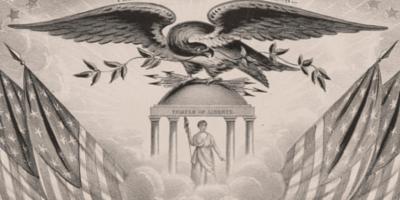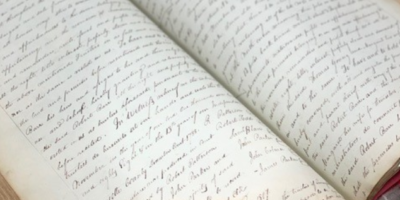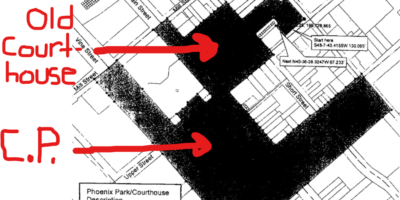By Beth Connors-Manke
NoC Features Editor
In our last issue, Betsy Taylor wrote a poignant and critical article entitled “Islam, Violence and Mourning in America.” In that article, she wrote about the murder of her friend Dan Terry in Afghanistan; after 30 years of work in community development abroad, Terry was gunned down in August. Terry represented a “dynamic sense of human solidarity, open and creative” – he was an exemplar of civic action, civic being.
Taylor’s article was about the loss of a friend, but it was also more broadly about how American culture has come to work, politically and otherwise. Advocating for an American civic sphere in which citizens come together in order to act together, to create a reality together, Taylor drew on the work of political philosopher Hannah Arendt who describes a citizenry “who pledge to act together for the common good.”
Arguing against an American climate in which defensive boundary protection rules the day, Taylor wrote that this citizenry “is more open and less anxious about boundaries. . . It [has] a covenant to both care for the commons and to safeguard individual dignity and agency — to recognize their interdependence.”
Taylor was a professor of mine, and it is she who first introduced me to Hannah Arendt’s work. A German Jew, Arendt was forced to leave Germany in 1933; she eventually immigrated to the U.S. in 1944, where she remained until her death. I almost immediately fell in love with Arendt’s political philosophy because it conceptualized a political culture in which citizens could come together to create a shared world without having to enforce one common identity or political ideology.
Arendt’s views on American public controversies weren’t always well received. Her 1959 essay “Reflections on Little Rock” about the integration of Central High School in Little Rock in 1957 angered activists and writers. In “Reflections,” the philosopher argued against racial oppression and the federal enforcement of the integration of public schools.
Arendt pointed out that while adults were making children the agents of social and political change, they were ignoring the fact that a more important human right was being ignored: the right to marry whomever one wishes. In other words, the South was allowed to keep its miscegenation laws on the books. The political philosopher felt that “the right to home and marriage” was more fundamental than “the right to attend an integrated school.”
In other words, Arendt was asking: Are you fighting the right fight?
The Art-gate Fight
Also in our last issue, on the back page, was a photo of a new mural publicly displayed on N. Limestone. I had noted and enjoyed the mural. I asked a few people if they knew who had done it; they didn’t know. The piece itself had nothing indicating the author’s name or the title of the mural.
When a photographer submitted a photo of the mural, we ran it with a caption mimicking the experience of passersby who saw the art and wondered who did it. The caption asked for the name of artist and the mural’s title so we could, in our next issue, “solve the mystery.”
The response to that caption and the running of the photo of what turned out to be Niah Soult’s mural churned up a discussion that was unexpected, emotional, accusatory, and at times uncivil. NoC has come to call the episode Art-gate.
The transcripts of Art-gate – compiled from emails, posts on noclexington.com, and NoC’s Facebook page – run 26 pages (11,800 words). This was an issue of the paper that openly criticized fear-mongering political conservatives, UK’s corporatization, and the political smoke screen around funding for the WEG. It also spotlighted local hip hop, the musical weirdness of Resonant Hole, a conference of sequential artists, roller derby, and indie and female filmmakers. On the front page was a call to protest Commerce Lexington’s affection for the coal industry.
This was a meaty issue, full of writing engaging important social and political concerns. Yet, the 11,800 word fight was over a photo of publicly viewed art.
To be fair, we were a bit cheeky (as our editorial tone tends to be from time to time) in our caption of the photo. We wrote that we were “here (probably illegally) reproducing it.” The fact is that we do not believe ourselves to have illegally reproduced anything, as the photo was taken in public, from a right of way, of a publicly displayed mural, with the intention of naming the artist when the information was available.
Soult, and then several of her supporters, verbosely disagreed with our having used the photo before ferreting out Soult’s identity as artist. Thanks to the speed of the Internet, their charges, and the response from NoC (predominately from Danny Mayer, our editor-in-chief), those 26 pages of the Art-gate transcript piled up at light speed. Also thanks to the now commonly accepted practice of writing quick, emotional, and incendiary Internet posts, everyone got really pissed off really quickly.
NoC was accused of being unethical, unprofessional, lame, lazy, needing business etiquette classes, money grubbers profiting off artists, a “progressive” publication (we’ve never claimed progressivism), and generally disrespectful. At some point, a detractor also questioned Danny’s humanity.
On the other side, Danny referred to Soult has having an “inflated ego and sense of self-worth.” At another point he told her to get her own paper. One of NoC’s writers called Soult naïve, hypocritical, and in essence, whiny; another called the discussion “increasingly juvenile.”
One less than tactful post from a visitor to NoC’s website advised Soult to “grow some, buck up, develop your stiff upper lip, be a man etc and stop the navel gazing. You should be thanking NoC not writing them a ticket.”
Attempts to defuse the situation generally failed.
There were actually arguments to accompany the insults: Danny defended NoC’s use of the photo (and our ethos itself) and Soult’s supporters advocated for respect for the artist. But, all-in-all, as an interchange between adults in several public forums, it was not a productive “discussion.”
Are you fighting the right fight?
At the heart of the issue is a disagreement over what “public” means. Since its inception, NoC has questioned definitions of “public” and “private” based on ownership. We (like others) called for CentrePointe lawn to be made available to citizens for productive use of the land. NoC questioned the locking of London Ferrell community garden. We have supported the farming of privatized land by radical and roving guerilla gardeners. We have written against industries and entities that believe corporate rights supersede citizens’ rights. We have written for barter over money exchange.
We see “being public” as a way of encountering the world around you such that something new is created with each interaction — that “something new” being a world more artful, more just socially and economically, a place less structured by rules developed by capitalist business and procedural professionalism that calls itself “ethics.”
Case in point: we do not believe our publication of Soult’s photo to have been unethical. Naming/not naming the artist was a matter of procedure more than anything since a) NoC was not in any way trying to obscure Soult’s identity as creator of the mural, and b) we were not using the photo of her mural for commercial gain.
For us, ethics lie in covering issues of poverty, incarceration, housing, environmental destruction, racism, and sexism and in supporting the cultural work done by artists of all kinds on the north side. If there were ethics involved in the printing of the mural photo, they had to do with the fact that, during layout, Danny decided for the photo of Soult’s mural and against a photo essay of the painting of Town Branch on KU’s parking lot downtown. The Town Branch art had been covered by other publications, and Danny decided for publicity for north side art (and for a north side artist).
NoC’s ethics, which are steered by Danny’s vision for the paper, are grounded in the idea of “public” meaning “created for, and shared in, the commons.” For us, “public” does not simply mean “owned by the state” or “seen by others.” In our March 24, 2010 issue, NoC writer Michael Benton defined the commons this way:
“The word ‘commons’ has a long history as a political term. When I hear it I am reminded of the enclosures of public lands in England during the 17th century and the resistance of groups like the Diggers and the Levelers, but today it has been broadened from its original usage to refer to the publically shared resources of our immediate environment, to the ‘cultural sphere’ (the arts, media airwaves and cultural heritage), to ‘public goods’ that allow our society to function (necessary resources like water or education), to even a sense of ‘life commons’ that refers to biological heritage, genomes and DNA.”
Because NoC holds dear the idea that a public commons is just and necessary, we do not feel responsible to entities (individuals or corporations) who believe their business interests trump the things Taylor wrote about in her article: a “dynamic sense of human solidarity, open and creative” or a citizenry that pledges “to act together for the common good.”
Our detractors seem to have been fighting over procedure (which they saw as personal affront to Soult). NoC was fighting for our ethics, our understanding of “public.”
It can be frustrating to be an artist, musician, or writer. People want our work, but they never seem to want to pay for it. They’d prefer to get art (and newspapers) for free so they can spend their money on tennis shoes or video games. They feel entitled to our arts. But, from artists’ point of view, how can we develop our artistry if we don’t have the time and money we need to do the work?
On the other hand, aren’t these cultural freeloaders at least partially right? Aren’t we all entitled to the beauty embodied in language, sound, and the visual? Shouldn’t the arts be something held in common? Shouldn’t the real fight be for creating a world where artists create for the commons and can afford to live in places with heat?
Our understanding of public means that Soult, as a cultural worker, deserves equitable compensation for her work, as any laborer does; we would never try to impede that. Our understanding of public does not mean that we believe that art publicly displayed is forever, and in all cases, controlled by its owners. This is not a disrespect to artists or their benefactors; it is part of a larger understanding of the commons.
Sharing a Table
In The Human Condition, Hannah Arendt defines “public” as the world of human affairs, artifacts, and fabrication, suggesting that to share the world is akin to sharing a table: “To live together in the world means essentially that a world of things is between those who have it in common, as a table is located between those who sit around it; the world, like every in-between, relates and separates men at the same time.”
I’ve loved this metaphor of the table for years because it is so concrete. Every time I sit down at a table in a meeting or to share a meal, I can think about how that interaction is about sharing a world.
I’ve sat at Danny’s kitchen table many times as a friend and as a colleague. He’s hospitable, gracious, and open, making homemade pasta for almost anyone who walks through his back door. At that same table, we’ve had editorial meetings where we all take turns telling each how wrong the other is; more than once, I’ve had to tell another editor to fuck off. Creating a shared world isn’t an easy thing, especially when you really care about a project you’re trying to bring to life and (even harder) to sustain.
As a writer and editor, I am extremely grateful that NoC allows many writers and photographers to contribute to what the paper is and can be. And, because NoC has continually and actively solicited new voices from the community, the paper has become a dynamic, imperfect project committed to the commons. As Art-gate shows, though, the commons can be an uncomfortable place — not unlike the north side itself with its social and economic tensions.
You can view Niah Soult’s mural at 509 N. Limestone. Her other work can be found at www.colormywalls.com.




Michael Benton
Beth,
Great mapping of the controversy. I like how you examined it alongside more important issues (Taylor’s essay) and your statement on the paper’s purpose.
Cheers,
MB